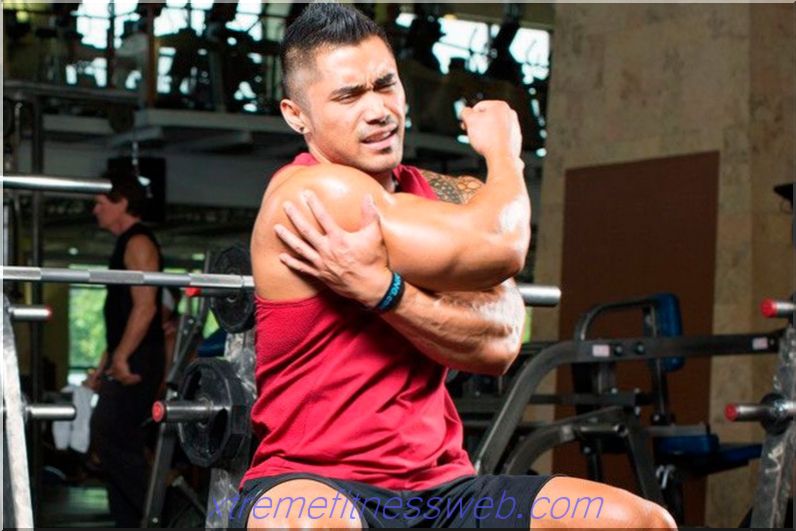- Is it permissible to train during a cold?
- Severe infection or just malaise
- How to train for colds?
- Overtraining or colds "> cortisol. This is a substance called the stress hormone, which is important for energy resources, immunity, carbohydrate metabolism.
An increase in cortisol reduces immunity, which lowers the body's defense against infections, increases the recovery period of muscle tissue and the area of inflammation. The condition in which a person arrives with chronically high cortisol resembles the symptoms of a mild cold.
The negative effects of training
- What are the symptoms of flu?
- General recommendations
- Conclusion
- Video review

Many athletes who have caught a cold are interested in the question of whether it is possible to continue training in such a painful condition, what is the best way to play sports so that physical activity does not have a negative effect on the immune system and does not cause complications.
Content
- 1 Is it permissible to train during colds "> 2 Severe infection or just malaise
- 3 How to train for colds?
- 4 Overtraining or colds?
- 5 The negative effects of training
- 6 What are the symptoms of flu?
- 7 General recommendations
- 8 Conclusion
- 9 Video Review
Is it permissible to train during a cold?
Each person from two to three times annually suffers from acute respiratory infections, flu and colds. The healing process takes about a week, and sometimes ten days. If you sum this time, you get about a month in a year. This is a fairly long period, which makes each person leading an active lifestyle think about whether it is possible to continue training with a cold.
Given the relevance of this problem, a lot of research has been done on how sport affects the state of a cold person. They confirmed the fact that with a mild cold, physical activity is permissible. This does not mean that such training will be effective. Its productivity, unfortunately, is declining.
Severe infection or just malaise
Studies prove the absence of exacerbation of symptoms or effects on the duration of the recovery period from physical activity only with an “upper cold”. This infection manifests itself only in unpleasant mi above the neck.
Mild colds, when a sore throat, nasal congestion is present, eyes are watery, but there is no aches and muscle pain, and there is no increase in body temperature, it allows you to exercise. The main thing is to take into account certain requirements that exist for this case.
How to train for colds?
You can not sweat and prevent sudden hypothermia. Many gyms are equipped with air cooling systems, working in the winter. Cold streams, if you get under them after or during the exercise, can significantly aggravate existing symptoms.
Training should be easy, not going beyond the pulse zone with 120-130 beats per minute. This allows you to not sweat. Lesson duration is also recommended to be minimized. You can not go beyond 40-45 minutes.

Overtraining or colds "> cortisol. This is a substance called the stress hormone, which is important for energy resources, immunity, carbohydrate metabolism.
An increase in cortisol reduces immunity, which lowers the body's defense against infections, increases the recovery period of muscle tissue and the area of inflammation. The condition in which a person arrives with chronically high cortisol resembles the symptoms of a mild cold.
The negative effects of training
If high cortisol is mistaken for a mild cold, continuing physical, a person only harms his health. Stress hormone continues to rise from training. The result is a sharp decrease in the protective functions of the body and the development of a real catarrhal disease.
Cortisol rises even when a person has a cold. And if training in this state does not worsen health, they will not bring any result in one way or another. An increase in cortisol does not allow to achieve both an increase in muscle mass, and strength indicators.
What are the symptoms of flu?
Quite often, flu and acute respiratory viral infections in the first stages can easily be mistaken for an ordinary mild cold. The exact diagnosis becomes clear on the third day. If the body temperature rises, pain in the muscle groups is felt, chills appear, then this is definitely the flu.
In this state, you can’t go to training. This will cause a double blow to the immune system, which will have to fight both infection and stress from cardio or strength training. The only thing that brings sports with the flu is an aggravation of the disease.
General recommendations
Mild colds, studies show, are not an obstacle to sports. The findings of such surveys do not say that a cold person has a decrease in strength or the effectiveness of training.
It is definitely forbidden to play sports with the flu and severe colds. The symptoms of these diseases can be recognized with accuracy only on the second or third day. And if active training these days does not stop, then the condition will deteriorate sharply, complications may occur.
Conclusion
It is safe to continue playing sports only with full confidence that the cause of the ailment is not a flu, but a mild infection. Training should be short with a heart rate of 120 to 130 beats per minute to prevent sweat from appearing.
Video review







